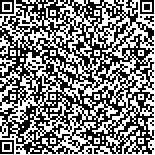|
| 引用本文: | 王兴强,郑年昊,崔春辉,曹梅,沈晔,刘莹,张子文,汤子威,秦传新,陈百尧.金乌贼热休克蛋白基因的挖掘及对低盐胁迫的响应[J].海洋科学,2021,45(3):59-70. |
| |
|
| |
|
|
| 本文已被:浏览 1582次 下载 1031次 |

码上扫一扫! |
|
|
| 金乌贼热休克蛋白基因的挖掘及对低盐胁迫的响应 |
|
王兴强1, 郑年昊1, 崔春辉1, 曹梅1, 沈晔1, 刘莹1, 张子文1, 汤子威1, 秦传新2, 陈百尧3
|
|
1.江苏海洋大学海洋科学与水产学院, 江苏 连云港 222005;2.中国水产科学研究院南海水产研究所, 广东 广州 510300;3.连云港市农业农村局, 江苏 连云港 222005
|
|
| 摘要: |
| 热休克蛋白(heat shock proteins:HSPs)为动植物响应外界胁迫产生的一类蛋白质,能有效改善机体对外界胁迫的适应能力。本研究基于先前获得的低盐胁迫金乌贼(Sepia esculenta)高通量转录组数据,对与低盐胁迫密切相关的热休克蛋白(热休克蛋白家族和晶体蛋白(crystallin)家族)基因进行挖掘;鉴于实时定量内参基因筛选,同时挖掘出金乌贼肌动蛋白(actin)家族系列基因;然后,对肌动蛋白、热休克蛋白和晶体蛋白家族基因及其编码的氨基酸序列进行生物信息学分析并探究低盐胁迫对金乌贼热休克蛋白和晶体蛋白家族基因表达的影响。金乌贼肌动蛋白家族基因包括actin、内收肌actin、胞质actin、actin 1、actin II和β actin 6个成员,热休克蛋白家族基因包括HSP β、小HSP、HSP 10、HSP 16、HSP 30、HSP 60、HSP 70、HSP 75、HSP 90α、HSP 90和HSP 90β 11个成员,金乌贼晶体蛋白家族基因包括S crystallin、S crystallin 6、S crystallin SL18和O crystallin 4个成员。氨基酸序列比对发现,肌动蛋白家族6个基因共享甘氨酸、精氨酸、丝氨酸、异亮氨酸、苏氨酸和天冬氨酸等13个位点,晶体蛋白家族4个基因共享苯丙氨酸、天冬酰胺、甘氨酸、天冬氨酸、脯氨酸、精氨酸、酪氨酸、丝氨酸和半胱氨酸等17个位点,而热休克蛋白家族HSP β、小HSP、HSP 10、HSP 16和HSP 30 5个基因共享1个甘氨酸位点和4个保守位点,HSP 60、HSP 70、HSP 75、HSP 90α、HSP 90和HSP 90β 6个基因仅共享2个保守位点。实时定量结果发现,低盐胁迫可以明显提高金乌贼HSP β、HSP 16、HSP 30和HSP 70的基因表达,而明显降低晶体蛋白家族基因的表达,表明在低盐胁迫条件下,金乌贼热休克蛋白家族基因通过自身的差异表达来提高机体对外界胁迫的适应防御能力。 |
| 关键词: 金乌贼(Sepia esculenta) 低盐胁迫 肌动蛋白 热休克蛋白 晶体蛋白 |
| DOI:10.11759/hykx20200503003 |
| 分类号:Q768 |
| 基金项目:广东省渔业生态环境重点实验室开放基金资助项目(FEEL_2019_3);连云港市海燕计划科研项目(KK19064) |
|
| Excavation of heat shock protein gene and its response to low salinity stress in Sepia esculenta |
|
WANG Xing-qiang1, ZHENG Nian-hao1, CUI Chun-hui1, CAO Mei1, SHEN Ye1, LIU Ying1, ZHANG Zi-wen1, TANG Zi-wei1, QIN Chuan-xin2, CHEN Bai-yao3
|
|
1.College of Marine Science and Fisheries, Jiangsu Ocean University, Lianyungang 222005, China;2.South China Sea Fisheries Research Institute, Chinese Academy of Fisheries Sciences, Guangzhou 510300, China;3.Lianyungang Agricultural and Rural Bureau, Lianyungang 222005, China
|
| Abstract: |
| Heat shock proteins (HSPs) are a kind of proteins that are produced by plants and animals in response to external stress. Moreover, they can effectively improve the adaptability of the body toward external stress. Based on the previously obtained high-throughput transcriptome data of Sepia esculenta under low salinity stress, we analyzed the protein HSPs (protein HSP family and crystallin family) genes closely related to low salinity stress in this study. In view of real-time quantitative internal reference gene screening, we determined the protein actin family genes of S. esculenta. Then, we analyzed the protein actins, HSPs, and crystallin family genes along with their encoded amino acid sequences via bioinformatics, and explored the effects of low salinity stress on the gene expression of protein HSPs and crystallin family of S. esculenta. The protein actin family genes of S. esculenta have actin, adductor actin, cytoplasmic actin, actin 1, actin II, and β actin. The protein HSP family genes have 11 members of HSP β, small HSP, HSP 10, HSP 16, HSP 30, HSP 60, HSP 70, HSP 75, HSP 90 α, HSP 90, and HSP 90 β. The protein crystallin family gene of S. esculenta has four members: S crystallin, S crystallin 6, S crystallin SL18, and O crystallin. The amino acid sequence alignment showed that the six genes of protein actin family shared 13 loci of glycine, arginine, serine, isoleucine, threonine, and aspartic acid, whereas the four genes of protein crystallin family shared 17 loci of phenylalanine, asparagine, glycine, aspartic acid, proline, arginine, tyrosine, serine, and cysteine. HSP β, small HSP, HSP 10, HSP 16, and HSP 30 shared one glycine locus and four conserved loci, whereas HSP 60, HSP 70, HSP 75, HSP 90 α, HSP 90, and HSP 90 β only shared two conserved loci. The real-time quantitative results showed that under low salinity stress, the HSP β, HSP16, HSP30 and HSP70 gene expressions of S. esculenta were significantly increased, whereas the expression of protein crystallin family gene was significantly decreased, thereby indicating that the HSPs gene of S. esculenta could improve the adaptive defense ability to external stress via its own differential expression. |
| Key words: Sepia esculenta low salinity stress actin heat shock protein crystalline |
|
|
|
|
|
|
